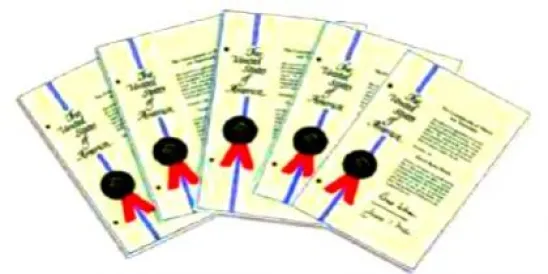President Obama signed the America Invents Act (H.R. 1249) (the “Act”) into law on Friday, September 16, 2011. The date of enactment establishes the date that various provisions of the Act became effective or will become effective. Below is an update to our previous client alert that summarizes some of the key provisions of the Act and includes the effective date of these provisions.
First-to-File – effective March 17, 2013
The Act moves the U.S. from a first-to-invent system to a first-to-file system. Any third-party prior art available before the patent application filing date could be used to reject the application. An applicant will still be given a one year grace period for any disclosures made by the applicant. Any application filed before this provision goes into effect (i.e., filed March 16, 2013 or earlier) will be examined under the current first-to-invent system.
Prioritized Examination – effective Monday, September 26, 2011
For an additional $4,800 fee ($2,400 for small entities), applicants can file a request to have their application examined out of turn.
Fee Increase – effective Monday, September 26, 2011
Effective Monday, September 26, 2011 there will be a 15 percent increase in almost all U.S. Patent Office fees, including filing, examination, extension, and maintenance fees.
Post Grant Review
A new post grant review system will be created that will expand the ability to challenge the validity of granted patents. The Act provides several options, outlined briefly below, to challenge patents, with each option having various timeframes and limitations as to the grounds for the challenge.
-
Post Grant Review - applies to patents issued from applications having an effective filing date of March 17, 2013 and later - within nine months of patent grant for challenges on nearly any ground.
-
Inter Partes Review - effective September 17, 2012 and applies to all patents regardless of the application filing date - more than nine months after patent grant for adversarial challenges based on prior art patents and printed publications.
-
Ex Parte Reexamination - current ex parte reexamination provisions remain effective - anytime after patent grant for non-adversarial challenges based on prior art patents and printed publications.
The details of the new system must be established by the U.S. Patent Office within one year of enactment. We will monitor the rules created by the U.S. Patent Office for the new post grant review system and provide additional updates.
Effective immediately, requests for inter partes reexamination will no longer be granted upon a showing of a “substantial new question of patentability.” Rather, the standard for determining whether to grant the request will require the requestor to show “a reasonable likelihood that the requester would prevail with respect to at least one of the claims challenged in the request.”
Transitional Post Grant Review for Business Method Patents – effective September 17, 2012 and applies to any business method patent regardless of issue date
The U.S. Patent Office must issue regulations establishing and implementing a transitional post grant review proceeding for the review of the validity of business method patents. Petitions for post grant review under the transitional review proceeding can only be filed by persons who have been sued for infringement or have been charged with infringement of the patent for which review is requested.
Pre-issuance Prior Art Submissions by Third Parties– effective September 17, 2012 and applies to any patent application regardless of filing date
A third party will be able to submit prior art publications for consideration during prosecution of an application if the prior art is submitted timely. The third party will have until the later of (1) six months after the date of publication of the application; or (2) the date of the first rejection. If a notice of allowance is issued before either of the foregoing events the third party will no longer be able to submit prior art. Therefore, third parties should not delay in submitting relevant prior art.
False Marking – effective September 16, 2011
The Act no longer allows any person to bring a false marking lawsuit under 35 U.S.C. Section 292. Rather, false marking lawsuits are limited to those filed by the United States or by a competitor who can prove a competitive injury. Also, marking a product with an expired patent that covered the product is not false marking. This change applies to any lawsuit pending on or after September 16, 2011.
Virtual Marking – effective September 16, 2011
A patent article can be marked with the word “patent” together with an address of a posting on the Internet that associates the patented article with the number of the patent.
Prior User Defense – available to all patents issued on or after September 16, 2011
The Act provides a defense to infringement based on prior commercial use if the accused infringer can show a reduction to practice and commercial use at least one year before the effective filing date of the asserted patent.
Tax Avoidance Strategies – effective September 16, 2011
Tax avoidance strategies are defined as within the prior art for both existing patents and pending applications. In other words, tax avoidance strategies are not patentable and patents directed to tax avoidance strategies are not enforceable.





 />i
/>i

